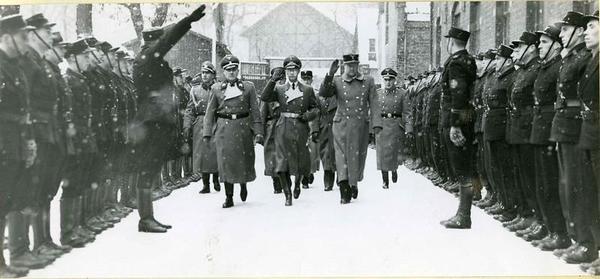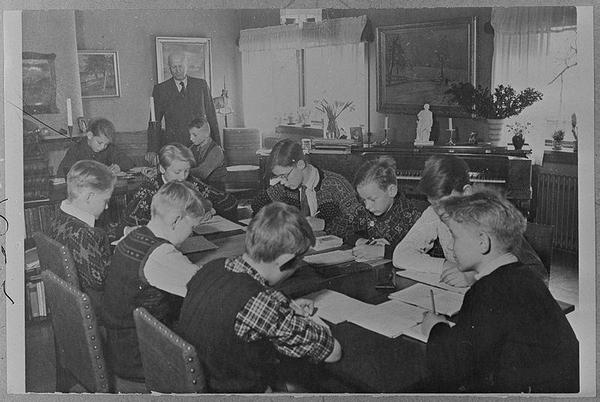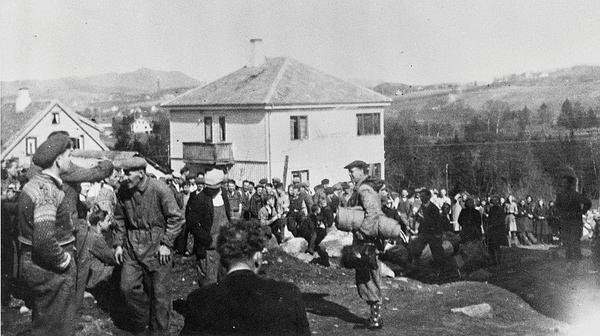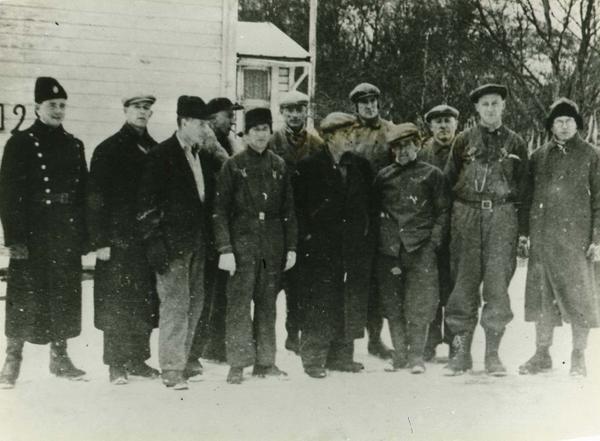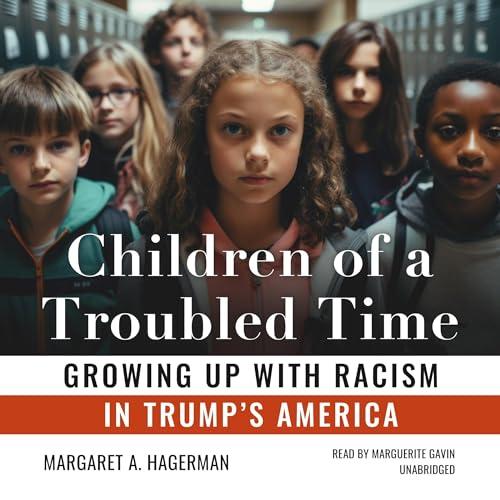2024 Hello , Norwegian teachers organized one of the few successful nonviolent campaigns against the Nazis in WWII. Was it easy? No. Did it hurt? Yes. Still, all but one teacher survived, and their courage and unity inspired hope in the hearts of the Norwegian people under occupation. When I woke up this morning, I needed hope in the worst way. Fire devastating Los Angeles. Trump promising to pardon January 6 insurrectionists on his first day in
office. Wherever there is oppression, people of moral courage rise to resist it. It's a heck of a lot more fruitful if we do it together. Norway's teachers were everyday people who stood up against the Nazis armed with pencils and paper.
Stalwart Teachers Thwart Fascist Agenda
Hitler's troops stormed into Norway, April 9, 1940, determined to snap up control of the country's northern port of Narvik and secure a shipping line for Swedish iron ore to feed the guzzling German War Machine. Norway's military defenses crumbled within days and a home-grown fascist Vidkun Quisling stepped up to collaborate with the Nazis. Quisling believed transforming the Norwegian education system would fast track the country's transition to authoritarian rule.
Vidkun Quisling (R) with Nazi Reich Commissioner of Norway Josef Terboven (C), German
officers and the Reich Guard. Riksarkivet (National Archives of Norway) 1-2-1942. Quisling ordered all teachers to join a Nazi union and begin to instruct
their students in the fundamentals of Nazism. Existing textbooks were banned and students were to be taught to speak German. An underground group in Oslo immediately
sent out a statement teachers could copy and mail to authorities including their names and addresses and a clear refusal to comply with the new rules. Roughly 9,000 of Norway’s 12,000 teachers participated, some in rural areas did not initially learn of the plan. The Quisling government panicked at this unexpected resistance and orders schools closed for a month. Two-hundred thousand parents wrote letters of protest and teachers held classes in secret under the threat of deportation.
A teacher with his young pupils at a home in Oslo, 1943. Photo courtesy
Digitalarkivet. "It was a matter of conscience," one teacher explained. "We couldn't have looked our
families and friends in the face if we hadn't taken this stand," Quisling tried to force the teachers into line, arresting 1,100 male teachers and
sending them to concentration camps.
The people of Gandal in Høyland turn up to protest and say goodbye to their teacher, who has been
arrested and is about to be transported. He stands in front of his house holding a sleeping bag. Photo taken by the stationmaster: via Digitalarkivet
Underground organizations paid the salaries of the jailed educators, so they didn't have to worry about their families. The Gestapo eventually withheld food and tortured the teachers to get them back in the classroom, but the men endured, refusing to give in. When the government readied to send 500 of the teachers to a concentration camp near Kirkenes in the arctic, word got out and crowds of students and farmers gathered along the tracks to sing and offer food and warm clothing as the train passed through the countryside. After their two-day journey by cattle-car, "... a sea voyage, in conditions that horrified even the Nazi doctor who went on board…. The ship had room for only 250 passengers, but all 499 were crammed in. Many could not even lie down,
though they were now ill with “pneumonia, gastric ulcers, asthma, bronchitis, hemorrhage and mental derangement.” ~Thanks to Peace Pledge Union, London.
Norwegian teachers held at Kirkenes prison camp, 1942, photo courtesy
Arkivverket.no At Kirkenes, sleeping on straw in flimsy shacks in subzero weather, one teacher died and three were seriously injured doing forced labor, mostly
building roads. Teacher Edvard Brakstad wrote: “We have to remember the great task we are accomplishing by being here, doing
something for the cause that we think is right and is the reason why we are here. So we just have to take what comes and hope that this isn’t going to last too long. The Norwegian teachers resistance grew from the broader struggle under Nazi occupation. From the invasion in 1940, people tried to outwardly show their solidarity by wearing flowers in support of their exiled king and patriotic lapel pins, one a simple paper clip to show their promise to "stay together." When soldiers started ripping off people's pins, some loyal Norwegians attached razor blades to them, which could cut probing fingers. Nazi laws and regulations abolishing or restricting civil rights prompted waves of spontaneous protests and open expressions of displeasure against the German occupiers and Norwegian
collaborators. Professional and non-profit associations led more organized protests until authorities clamped down in the early summer of 1941. Bishops of the Norwegian Lutheran Church resigned when the occupation government created Fascist Youth Front for all 10 to 18 year olds.
Propaganda poster promoting the National Union Youth Front, the group Quisling founded to
indoctrinate Norwegian girls and boys. Digital Museum, Justice Museum, Trondheim. Underground resistance groups operated throughout occupation, gathering
information on German military activity throughout the country, which they passed on to the British via secret radio transmission. Illegal pamphlets and newspapers were produced and distributed. By November 1942, Quisling realized the coming winter might force teachers to give in, but he'd already lost any popularity he'd had and released them to go home. The people's resistance eventually forced Quisling to abandoned his plan for a fascist state as well as school system. He lost face with Hitler over these failures and is reported to have said, “You teachers have destroyed everything for me!” Tone of voice sound familiar? Like my story today? Please share this email with friends and family.
Sources https://www.historiamag.com/a-different-kind-of-wwii-resistance/
Hey, I read an amazing book this week and you all should request it at your local library right now. Sociologist Margaret Hagerman interviewed children ages 10-13 after Donald Trump was first elected in 2016. Their thoughts and feeling in their own words are powerful. Kids are not too young to know what's going on in the country and they don't mince words.
Hagerman interviewed in two dramatically different political landscapes: Mississippi and Massachusetts. She talked to kids who identified as conservative and liberal and kids from different racial groups. She discovered remarkably similar patterns in the ideas expressed by these children. Racism, she asserts, is not just a local or regional phenomenon: it is a broad American project affecting childhoods across the country.
Follow me on social media
This newsletter is a reader-supported publication. To support my work, consider becoming a paid subscriber.
Read
a great book? Have a burning question? Let me know. If you know someone who might enjoy my newsletter or books, please forward this e-mail. I will never spam you or sell your email address, you can unsubscribe anytime at the link below. To find out more about my books, how I help students, teachers, librarians and writers visit my website at www.MaryCronkFarrell.com. Contact me at MaryCronkFarrell@gmail.com. Click here to subscribe to this newsletter. |
|
|

